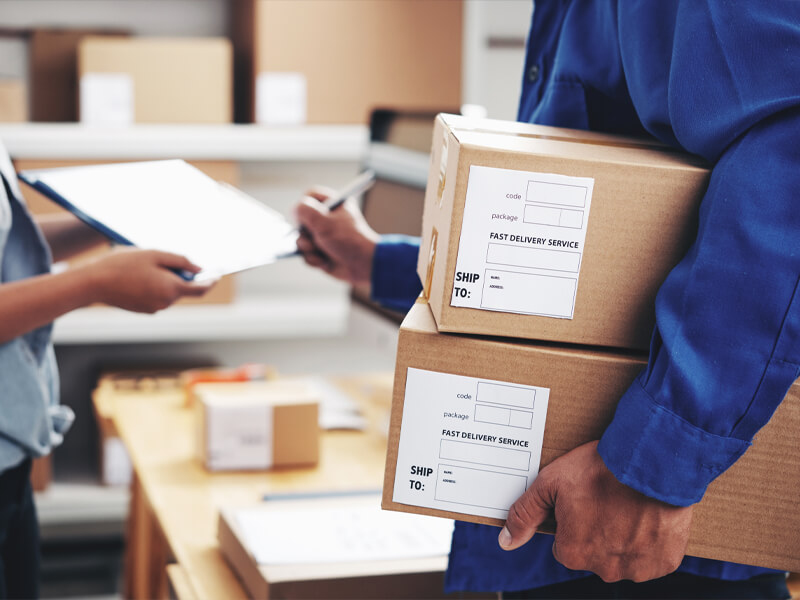Industrial Metal Packaging: Stamina and Sturdiness in Every Design
Industrial Metal Packaging: Stamina and Sturdiness in Every Design
Blog Article
Effective Industrial Recycling Solutions for Lasting Packaging: A Comprehensive Overview
That's where this extensive overview on effective industrial recycling options for sustainable product packaging comes in. By discovering vital areas such as product packaging material choice, developing for recyclability, executing recycling infrastructure, collaborating with recycling partners, and monitoring and measuring recycling success, this overview will furnish you with the knowledge and tools required to make enlightened choices and drive positive change within your company. Whether you're a product packaging specialist, sustainability manager, or simply interested in the topic, this guide will certainly give valuable insights and techniques to assist you browse the world of lasting product packaging.
Packaging Material Selection
The choice of product packaging materials plays an essential duty in making certain the sustainability of commercial recycling solutions. When it comes to sustainable packaging, the selection of materials is type in reducing ecological effect and making best use of reusing performance. Selecting the ideal materials can help in reducing waste generation, save resources, and advertise a circular economy.
Products like cardboard, paper, glass, and particular kinds of plastics can be recycled numerous times without shedding their quality. On the other hand, materials that are challenging to reuse, such as combined plastics or non-recyclable compounds, can create difficulties for the reusing procedure and might end up in incinerators or garbage dumps.
Another consideration is using eco-friendly and naturally degradable products. Packaging made from renewable energies, such as plant-based plastics or biopolymers, can help in reducing dependency on fossil fuels and reduce environment modification. Furthermore, biodegradable materials damage down normally with time, decreasing the build-up of waste in landfills.
Moreover, the weight and volume of packaging products ought to be lessened to reduce transport costs and power usage. Lightweight materials not only require fewer resources during manufacturing however also add to decrease carbon emissions during transportation.
Creating for Recyclability
Packaging developers need to focus on the use of products that are extensively accepted for recycling and have established reusing infrastructures. Materials such as glass, light weight aluminum, and specific kinds of plastic, like PET and HDPE, are commonly reused and ought to be liked over products that are pricey or challenging to reuse.
One more essential consideration in developing for recyclability is the elimination of unneeded parts or products. By minimizing the variety of layers, finishes, and additional parts, product packaging can be made less complex and easier to recycle. Additionally, developers ought to aim to reduce making use of combined materials, as they can make complex the reusing process.

Implementing Recycling Facilities
Effective implementation of reusing facilities is important for the success of commercial recycling services. Without correct framework in position, the recycling procedure comes to be inefficient and inefficient, hindering the overall objective of sustainable packaging.
To apply reusing framework properly, several essential variables need to be thought about. There must be a well-organized collection system that helps with the splitting up and collection of recyclable materials. This can consist of assigned reusing bins in public rooms, as well as collaborations with waste management firms for curbside pickup and sorting.
When gathered, the recyclable materials need to be transferred to reusing facilities in a prompt manner. This calls for reliable logistics and transportation networks, ensuring that the products reach the ideal facilities immediately.
At the recycling facilities, progressed sorting and handling technologies need to be in location to divide different kinds of products efficiently. This consists of the use of automated sorting makers, optical scanners, and manual sorting strategies.
Moreover, there need to be a durable market demand for recycled materials. This can be achieved via cooperations with producers and sectors that make use of recycled products in their manufacturing procedures. Developing a stable market for recycled products incentivizes the recycling market and promotes the circular economic climate.
Working Together With Recycling Allies

One key element of working together with recycling companions is the facility of clear interaction networks. It is essential to establish open lines of communication to assist in the exchange of information, updates, and feedback. This allows both events to remain educated concerning the progress of recycling campaigns and address any kind of difficulties or concerns that may develop.
Additionally, cooperation can entail joint navigate here efforts in implementing and designing recycling programs. navigate to these guys Recycling companions can give useful insights and advice in developing reliable collection systems and identifying the most suitable recycling modern technologies. By interacting, businesses and recycling partners can enhance the reusing process and decrease waste.
Moreover, collaboration can extend beyond the functional aspects of reusing. It can likewise encompass campaigning for and education campaigns. By joining forces, businesses and reusing companions can increase recognition about the relevance of recycling and promote the fostering of sustainable product packaging methods among consumers and other stakeholders.
Tracking and Measuring Recycling Success
To guarantee the effectiveness of industrial reusing remedies and the success of sustainable product packaging objectives, it is important for organizations and their reusing companions to establish a detailed system for tracking and gauging recycling success (plastic container manufacturer). Measuring and tracking reusing success allows companies to assess the effect of their reusing efforts, recognize areas for enhancement, and established meaningful targets for future progression
One method to track reusing success is through using information collection and analysis devices. By gathering data on the amount of product packaging waste generated, the portion of waste that is reused, and the kinds of products being reused, services can gain valuable insights right into their reusing performance. This information can after that be assessed to recognize patterns, patterns, and locations of ineffectiveness.
Another crucial element of tracking and gauging reusing success is establishing standardized and clear metrics. This allows organizations to compare their performance versus industry benchmarks and track their development gradually. Metrics such as recycling rates, waste diversion rates, and greenhouse gas exhausts can supply a quantitative action of a company's reusing success.

Final Thought
To conclude, executing effective commercial recycling options for sustainable packaging requires mindful factor to consider of product packaging product choice, designing for recyclability, carrying out reusing framework, working together with recycling companions, and monitoring and gauging recycling success. By incorporating these methods, businesses can contribute to a much more lasting and environmentally-friendly approach to product packaging, reducing waste and promoting the circular economy.
By exploring key locations such as product packaging material option, making for recyclability, implementing reusing framework, collaborating with recycling partners, and monitoring and measuring recycling success, this overview will equip you with the understanding and devices essential to make enlightened choices and drive positive change within your company. Packaging designers must focus on the use of products that are commonly accepted for recycling and have actually established reusing facilities.Cooperation with reusing companions is important for the successful implementation of commercial recycling remedies and the success of lasting product packaging objectives. By signing up with pressures, businesses and recycling companions can raise recognition about the significance of recycling and advertise the fostering of sustainable packaging methods among customers and other stakeholders.
By collecting information on the quantity of packaging waste produced, the percentage of waste that is recycled, and the types of materials being recycled, businesses can acquire useful understandings into their recycling efficiency.
Report this page